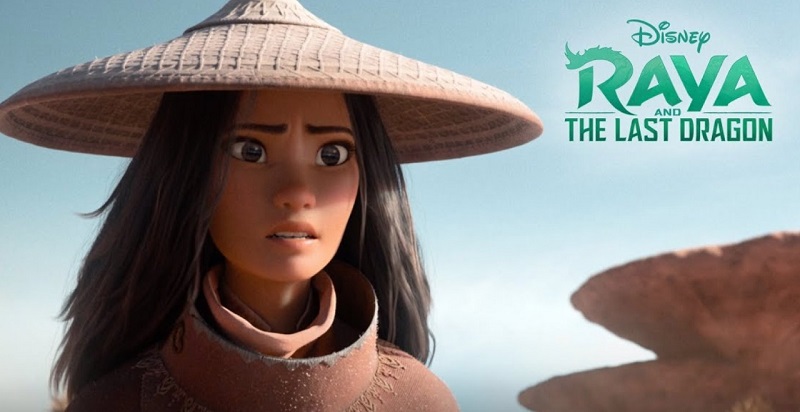
The wait comes to an end! Produced by the Walt Disney Animation Studios, Raya and the Last Dragon finally made it to the big screens after the tumultuous 2020. The action-adventure tale which is the 59th feature of the pioneering studio, depicts a tale of valour, love, trust, deceit, going beyond one’s comfort zones for the greater good and defeating evil. Nothing quite different in that; but what makes Raya and the Last Dragon stand out is its treatment, characters, animation, setting and a story well told.
The animated feature is also another evidence of the House of Mouse opening its arms and doors to more diverse stories and audiences around the world. Disney has been taking inclusivity seriously by shattering the barriers and stereotypes that it once celebrated. Raya, the warrior princess is a new-age Disney protagonist who’s ready to take on the mantle set by Elsa-s, Moana-s and Merida-s.
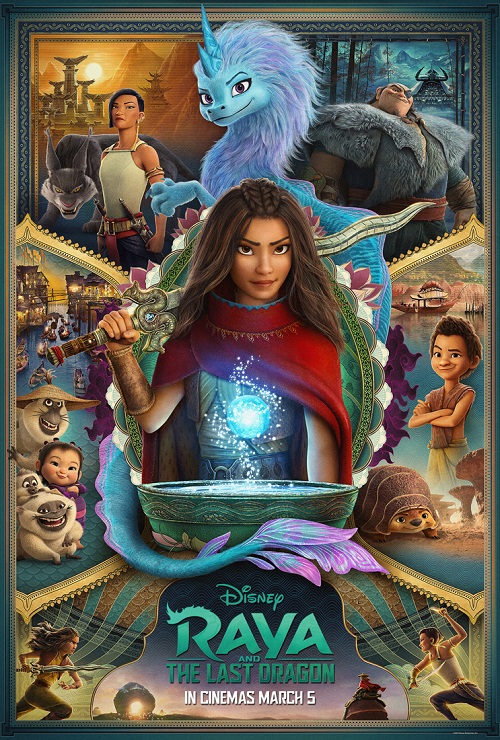 Set in the fantasy land of Dragon-shaped Kumandra, Disney Animation’s latest feature film tells the mythic story of Raya, princess of Heart, who embarks on an adventurous quest to find the last Dragon, Sisu (a Water Dragon) in order to defeat the engulfing monsters, Druuns, and bring back the people – five warring tribes – of the land together. On the way, she makes new friends, topples hurdles and fights Druuns, as well as an old mate who has turned into an enemy (Namari, Princess of the Fang tribe).
Set in the fantasy land of Dragon-shaped Kumandra, Disney Animation’s latest feature film tells the mythic story of Raya, princess of Heart, who embarks on an adventurous quest to find the last Dragon, Sisu (a Water Dragon) in order to defeat the engulfing monsters, Druuns, and bring back the people – five warring tribes – of the land together. On the way, she makes new friends, topples hurdles and fights Druuns, as well as an old mate who has turned into an enemy (Namari, Princess of the Fang tribe).
The epic animated extravaganza is a visual treat, rich with lore and is vibrantly detailed. The animation and VFX by the studio is top-notch and makes the film all the more spectacular. The dragons are unlike the feisty, fire-breathing ones we know from Game of Thrones or its likes; on the contrary, they advocate peace and harmony. The characters of Raya, Namari, Chief Benja, Tuk Tuk and Sisu are also well-crafted, and their characteristics are worth noting and admiring. The cultural and traditional influences are clearly visible in the characterisation and other aspects of the film that adds to its vibrance and cosmopolitan flavour.
The animators have also put in the overall classic style of Disney tales of good over evil like Frozen, Moana, at the backdrop of the film’s rich and detailed environments — rainforest shrines with visible moisture, snowy mountain fortresses shrouded in fog — which are visually impressive.
Animation as a medium mostly escapes reality; and what works wonders for an animated film is its treatment, grandeur, opulence, and experimentation that generally does not live up to its live-action remake. In my opinion, it would be next to impossible to do a live-action version of Raya and the Last Dragon, not only because it would cost billions, but also because our ‘suspension of disbelief’ is more activated while watching animated films.
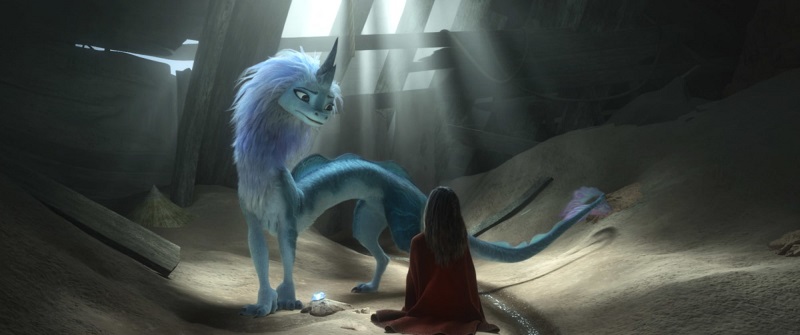
The fantasy land consisting of Tail, Talon, Fang, Spine and Heart are inspired by Southeast Asian cultures of Laos, Thailand, Cambodia, Vietnam, Myanmar, Malaysia, Indonesia, and the Philippines. To keep it authentic, filmmakers and the production team travelled to all these countries except Myanmar, Malaysia, and Brunei, to carry out background research. Thai artist Fawn Veerasunthorn helmed the story animation for the film, while film’s team also formed the Southeast Asia Story Trust, a collective of consultants for the film including Dr. Steve Arounsack, an associate professor of Lao Anthropology at California State University.
Directed by Don Hall and Carlos López Estrada, Raya and the Last Dragon is co-directed by Paul Briggs and John Ripa, produced by Osnat Shurer and Peter Del Vecho, written by Qui Nguyen and Adele Lim, and music score composed by James Newton Howard. The film features a predominantly Asian American voice cast, including Kelly Marie Tran as Raya and Awkwafina as Sisu, the titular dragon, along with Gemma Chan as Namari, Daniel Dae Kim, Sandra Oh, Benedict Wong, Izaac Wang, Thalia Tran, and Alan Tudyk as Tuk Tuk.
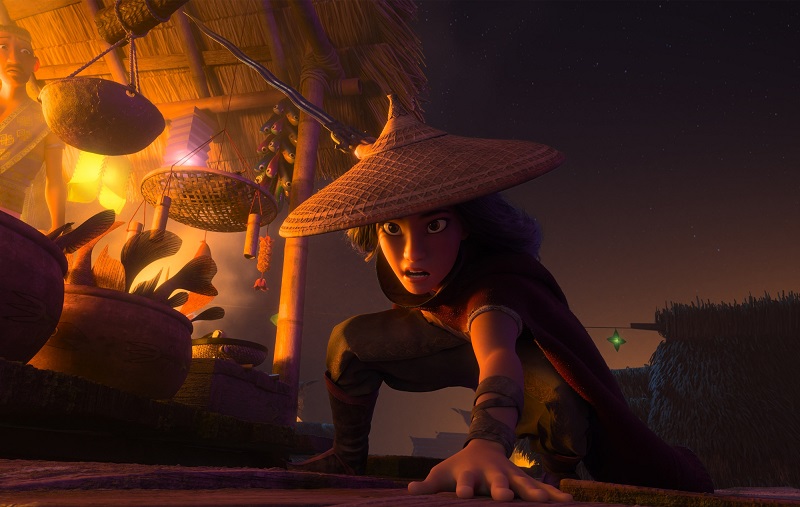
Tran as Raya delivers an amazing performance, who’s vulnerable, confused, yet strong in her path to bring unity in Kumandra. Tran has a unique blend of boldness and gentleness – an innate ability to attract audiences. She is fierce and helpless wherever the scene requires and equally comfortable in action sequences.
But Awkwafina as the furry, horse-like sassy Sisu, steals the show and she’s the one to make Raya believe again in the power of trust and self-belief. If you can’t believe in yourself to trust others, it won’t work – is what she imbibes in her. She is funny, and her humour is never out of place. Her voice control is on point and so is her voice-acting.
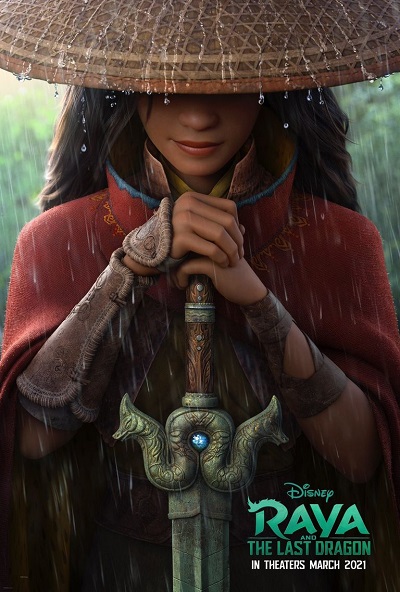 The Disney treatment of the Druuns that turns whatever it touches to stone, hints to preserve the distinctive elements of the non-Western cultures. Maybe the House of Mouse is paying tribute to these cultures, or these could be the instruments of market strategy to lure global and specific audiences into the Disney continuum.
The Disney treatment of the Druuns that turns whatever it touches to stone, hints to preserve the distinctive elements of the non-Western cultures. Maybe the House of Mouse is paying tribute to these cultures, or these could be the instruments of market strategy to lure global and specific audiences into the Disney continuum.
The film is slightly stretched in the middle and could have used a Southeast Asian director to tell the story their way, but overall it’s an animated splash of colours and goodness after the morbid 2020.
Raya and the Last Dragon is overtly political but not preachy at all. It bats for the universal call for peace and trust in a world that’s full of hate and backstabbing. It infuses the belief that war ultimately causes ruin and turns every world into a wasteland. No matter how big or powerful we are, no battle is won alone and coming together in times of crisis is a nature humans need to consider more, which can work like magic.
Raya and the Last Dragon is now playing in theaters in India and also streaming on Disney+ with a Premier Access in the U.S.
